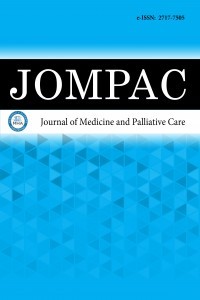1.
WHO. Q&A on coronaviruses (COVID-19). Accessed july6, 2020. https://who.int/news-room/q-a-detail/q-a-coronaviruses
2.
Sun P, Qie S, Liu Z, Ren J, Xi J. Clinical characteristics of 50466patients with 2019-nCoV infection. MedRxiv. 2020.
3.
Montenegro F, Unigarro L, Paredes G, et al. Acute respiratorydistress syndrome (ARDS) caused by the novel coronavirusdisease (COVID-19): a practical comprehensive literature review.Exp Rev Respir Med. 2021;15(2):183-195.
4.
Grasselli G, Greco M, Zanella A, et al. Risk Factors AssociatedWith Mortality Among Patients With COVID-19 inIntensive Care Units in Lombardy, Italy. JAMA Intern Med.2020;180(10):1345-1355. doi:10.1001/jamainternmed.2020.3539
5.
WHO. Coronaviruses disease 2019 (COVID-19). 2019; https://www.who.int/emergencies/diseases/novel-coronavirus-2019
6.
Pancorbo-Hidalgo PL, Garcia-Fernandez FP, Lopez-MedinaIM, Alvarez-Nieto C. Risk assessment scales for pressure ulcerprevention: a systematic review. J Adv Nurs. 2006;54(1):94-110.doi:10.1111/j.1365-2648.2006.03794.x
7.
Beers MH, Berkow R. The Merck Manual of Geriatrics. Merck &Co. Inc Whitehouse Station, NJ. 2000;
8.
Kıraner E, Hülya K. COVID-19 Tanısı ile yoğun bakımdayatan hastalarda basınç yaralanmalarının ve risk faktörlerininretrospektif analizi. Yoğun Bakım Hemşireliği Derg.2021;25(3):139-151.
9.
Karahan A, AAbbasoğlu A, Işık SA, et al. Factors AffectingWound Healing in Individuals With Pressure Ulcers: ARetrospective Study. Ostomy/Wound Manage. 2018;64(2):32-39.
10.
de Araújo TM, de Araújo MFM, Barros LM, de Oliveira FJG,da Silva LA, Caetano JÁ. Educational intervention to assess theknowledge of intensive care nurses about pressure injury. RevRene. 2019;(20):42.
11.
GENCER ZE, Erdinç Ü, ÖZKAN Ö. Basınç ülserleri tedavimaliyetleri etkililik analizi; konvansiyonel ve modern yarabakım tedavi maliyetlerinin karşılaştırılması. Akdeniz Tıp Derg.2019;5(2):201-208.
12.
Tanrikulu F, Dikmen Y. Yoğun bakım hastalarında basınç yaraları:risk faktörleri ve önlemler. J Hum Rhythm. 2017;3(4):177-182.
13.
Lovicu E, Faraone A, Fortini A. Admission braden scale scoreas an early independent predictor of in-hospital mortalityamong inpatients with COVID-19: a retrospective cohort study.Worldviews Evid Based Nurs. 2021;18(5):247-253.
14.
Bandle B, Ward K, Min SJ, et al. Can Braden score predictoutcomes for hospitalized heart failure patients? J Am GeriatrSoc. 2017;65(6):1328-1332.
15.
Knaus WA, Draper EA, Wagner DP, Zimmerman JE. APACHEII: a severity of disease classification system. Crit Care Med.1985;13(10):818-829.
16.
Vincent J-L, Moreno R, Takala J, et al. The SOFA (Sepsis-relatedOrgan Failure Assessment) score to describe organ dysfunction/failure. Springer-Verlag; 1996.
17.
Zhang P, He Z, Yu G, et al. The modified NUTRIC score canbe used for nutritional risk assessment as well as prognosisprediction in critically ill COVID-19 patients. Clin Nutr.2021;40(2):534-541.
18.
Defloor T, Schoonhoven L, Fletcher J, et al. Statement ofthe European Pressure Ulcer Advisory Panel--pressureulcer classification: differentiation between pressure ulcersand moisture lesions. J Wound Ostomy Continence Nurs.2005;32(5):302-306. doi:10.1097/00152192-200509000-00006
19.
Cox J. Predictors of pressure ulcers in adult critical care patients.Am J Crit Care. 2011;20(5):364-375.
20.
Bergstrom N, Demuth PJ, Braden B. A clinical trial of the BradenScale for predicting pressure sore risk. Nurs Clin North Am.1987;22(2):417-428.
21.
Singer P, Blaser AR, Berger MM, et al. ESPEN guideline on clinicalnutrition in the intensive care unit. Clin Nutr. 2019;38(1):48-79.doi:10.1016/j.clnu.2018.08.037
22.
Mechanick JI, Carbone S, Dickerson RN, et al. Clinical nutritionresearch and the COVID-19 pandemic: a scoping review of theASPEN COVID-19 task force on nutrition research. JPEN JParenter Enteral Nutr. 2021;45(1):13-31.
23.
Reuler JB, Cooney TG. The pressure sore: pathophysiology andprinciples of management. Ann Intern Med. 1981;94(5):661-666.
24.
Lyder CH. Pressure ulcer prevention and management. JAMA.2003;289(2):223-226.
25.
Kurtuluş Z. Braden skalası ile belirlenen yüksek riskli hastagrubunda albümin düzeyleri ile bası yaraları arasındaki ilişki.Marmara Universitesi (Turkey); 2003.
26.
Armstrong R, Kane A, Kursumovic E, Oglesby F, Cook TM.Mortality in patients admitted to intensive care with COVID-19:an updated systematic review and meta-analysis of observationalstudies. Anaesthesia. 2021;76(4):537-548.
27.
Cooper KL. Evidence-based prevention of pressure ulcers in theintensive care unit. Crit Care Nurse. 2013;33(6):57-66.
28.
Coleman S, Nixon J, Keen J, et al. A new pressure ulcer conceptualframework. J Adv Nurs. 2014;70(10):2222-2234.
29.
Haisley M, Sørensen J, Sollie M. Postoperative pressure injuriesin adults having surgery under general anaesthesia: systematicreview of perioperative risk factors. J Br Surg. 2020;107(4):338-347.
30.
NPUAP. 2014; Available at: https://www.epuap.org/wp-content/uploads/2010/10/NPUAP-EPUAP-PPPIA-Quick-Reference-Guide-2014-DIGITAL.pdf
31.
Berlowitz DR, Brandeis GH, Morris JN, et al. Deriving a risk-adjustment model for pressure ulcer development using theminimum data set. J Am Geriatr Soc. 2001;49(7):866-871.
32.
Rostami M, Mansouritorghabeh H. D-dimer level in COVID-19infection: a systematic review. Exp Rev Hematol. 2020;13(11):1265-1275.
33.
Bluestein D, Javaheri A. Pressure ulcers: prevention, evaluation,and management. Am Fam Physician. 2008;78(10):1186-1194.
34.
Borghardt AT, Prado TN, Bicudo SD, Castro DS, Bringuente ME.Pressure ulcers in critically ill patients: incidence and associatedfactors. Úlcera por pressão em pacientes críticos: incidênciae fatores associados. Rev Bras Enferm. 2016;69(3):460-467.doi:10.1590/0034-7167.2016690307i
35.
Alhazzani W, Møller MH, Arabi YM, et al. Surviving SepsisCampaign: guidelines on the management of critically ill adultswith Coronavirus Disease 2019 (COVID-19). Intensive Care Med.2020;46(5):854-887. doi:10.1007/s00134-020-06022-5

